Continuous insulation is one of the core elements in constructing an energy efficient home.
Insulation is a dense material by design which helps slow the transfer of energy (hot or cold air) through the structure of your home and is key to helping keep indoor temperatures constant.
The current Australian National Construction Code addresses the level of insulation required for any Australian home in relation to its specific climate zone. As part of this process computer modelling software called NatHERS is used by an Energy Rating Consultants after a house design is completed by the architect or building designer.
We believe that insulation is a crucial area required to achieve a comfortable home and is considered too late in the process in most instances to be truly continuous or effective.
Engineers, architects and builders often do their own parts independently of each other throughout the design process without someone being the voice of reason speaking up for your insulation along the way in this process.
We have found a few key areas to consider when addressing insulation, if you are designing a place to be resilient to varied temperature ranges and still provide indoor comfort all year round.
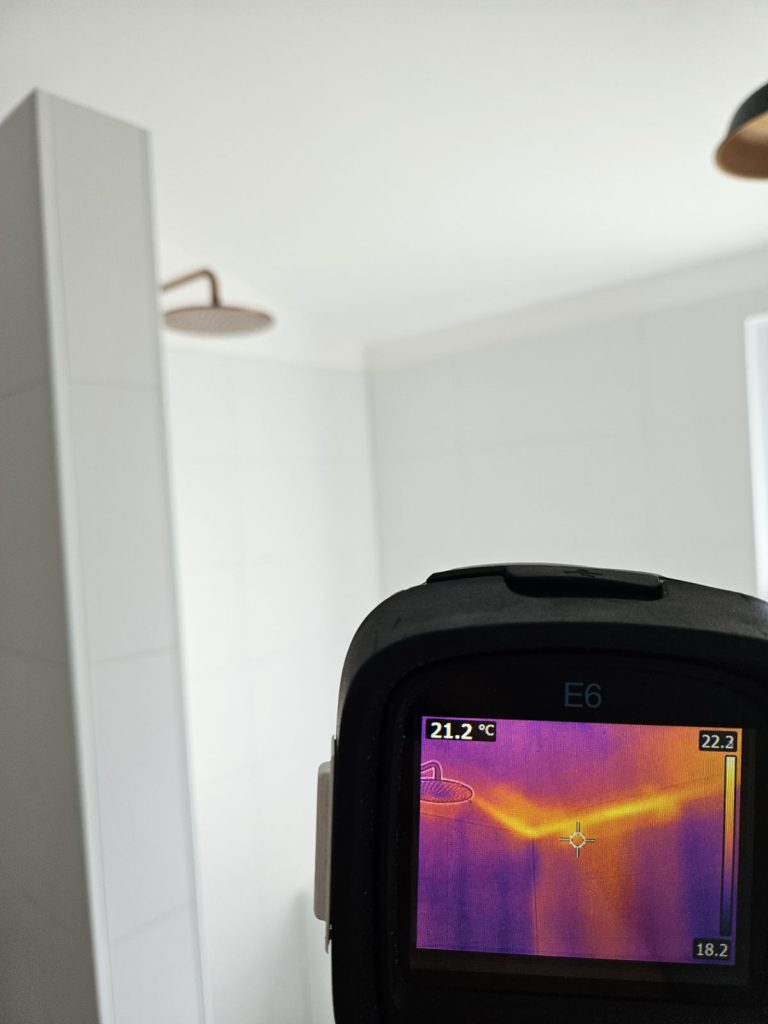
Timber vs Steel Frame?
Steel has high thermal conductivity and allows temperature transfer at a rate of approx. 45 W/mK. (that’s very quickly, it will exchange heat/cold rapidly into the building.)
Timber on the other hand is almost like a natural insulator as its rate of conductivity is extremely low at 0.14 W/mK.
Whenever you can, choose timber over steel to reduce thermal conductivity in design, for windows, framing, doors, floor systems and even cladding.
Bracing: Problem – Gaps in Insulation
In modern architectural projects, wall space is limited due to larger openings and often, the only walls left are used for an opportunity for structural bracing.
This bracing area is typically achieved in timber plywood panels nailed to the timber studs or otherwise in steel power truss units (pictured below.) Working around bracing design can be managed with an experienced builder/designer/architect.
Example: Steel bracing within a wall cavity with 90mm R2.7 Earthwool batts installed between the square hollow section steel members.
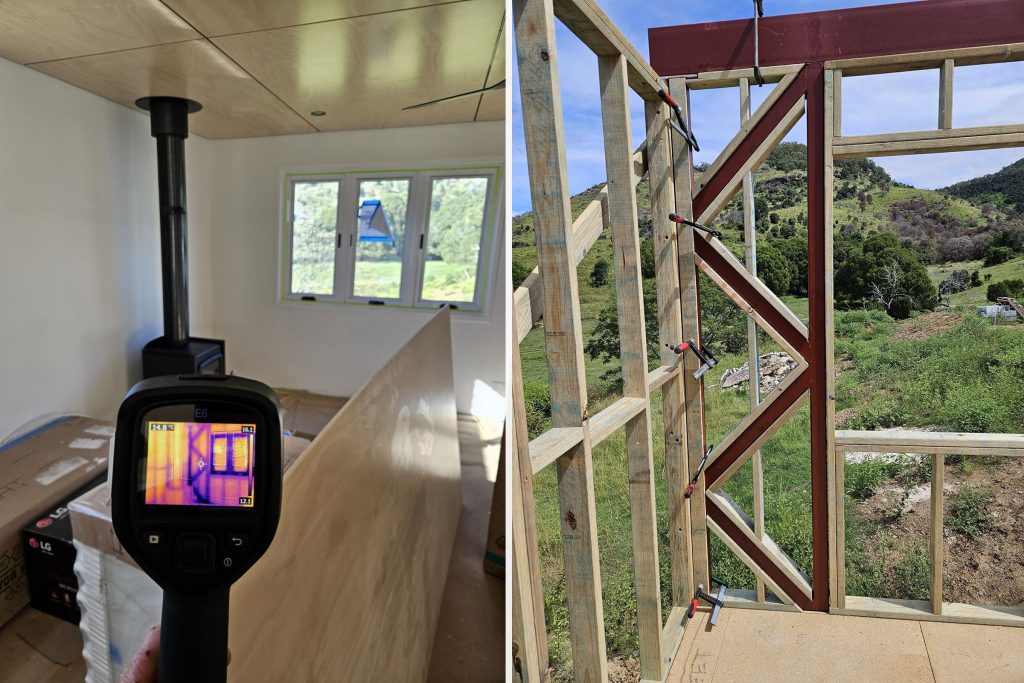
Solution: Counter battening the walls internally and fitting insulation across the whole steel power truss wall area could provide an additional cavity to be insulated, but this would reduce the room area and make the total wall buildup deeper, adding larger window and door reveals also.
Frame Design: Problem – Gaps in insulation
The total R-value of continuous insulation can be negatively impacted by the buildings support system or structure.
Timber framing has a major advantage over steel framing for insulating, due to its low conductivity and flexibility for framing layout. Steel framing requires more bracing elements and often leaves trapped air cavities that are not accessible to be insulated. To achieve the goal of continuous insulation, the way the framing is designed and constructed can help or hinder this greatly.
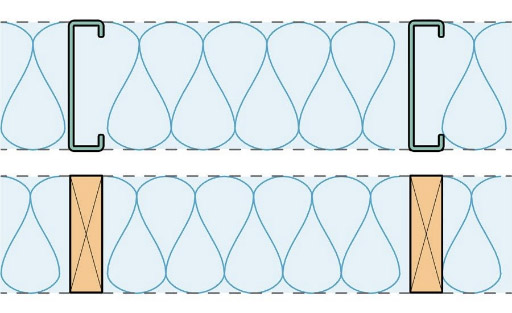
Example: This wall frame is a great example of how timber can be used to provide structural support for the floor above whilst not compromising on the allocation of insulation to fit within its cavity. The window lintel or timber beam above the opening is not able to be insulated as it is the similar thickness to the wall frames. In this case total R value of the 65mm timber lintel is R 0.65.
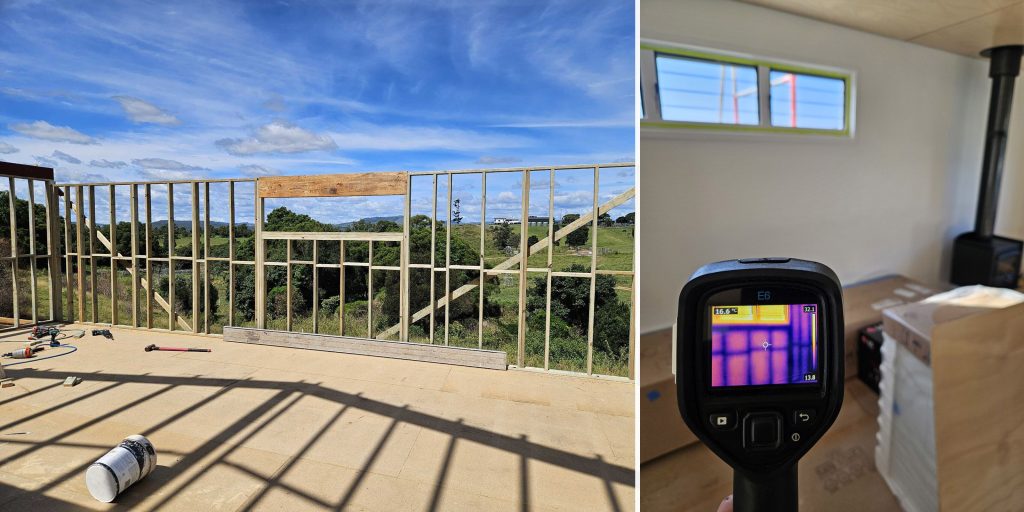
Shading/Orientation: Problem – Sun on building
Orientation of a the building within South East QLD should primarily consider the effects of sun on the dwelling.
Not just limited to openings like windows and doors, but also the whole wall itself. What internal space is being subject to this heat load and can it be shaded in summer? Considering other environmental factors like the local wind directions or breezes, views and other orientation factors should be second to heat considerations for energy efficient designs.
Solution: Shading
Insulation helps reduce the air temperature exchange through the structure but should only be a secondary measure.
Good design will use shading to reduce the immediate radiation on the wall surfaces from our friendly neighbourhood yellow dwarf (the sun). Shading can be achieved with a large eave or separate structures offset from the external walls to reduce heat load, especially on western walls.
Ventilated cavity batten systems are a great way to allow the exterior cladding to change in temperature and evaporate condensation buildup whilst under heat load from the sun as a buffer between the structure and cladding.
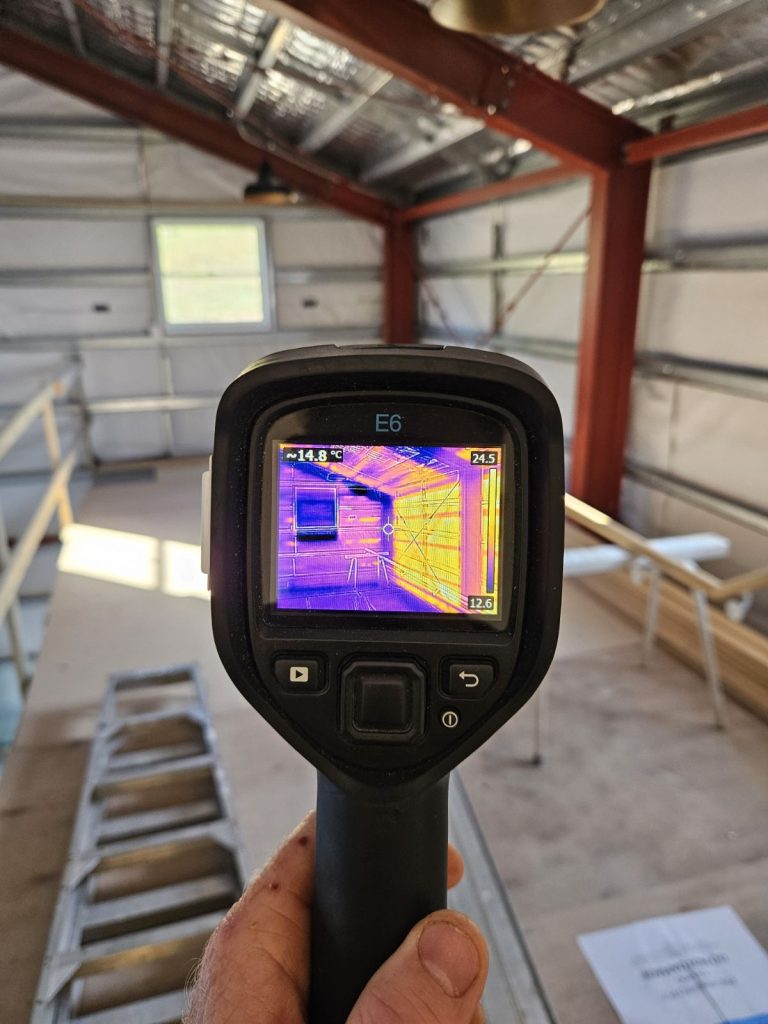
This image of the thermal camera is taken at the end of winter showing a north western corner of the building. The heat load on the structure is significant on the northern wall: hot is yellow and cold is purple.
Our team has experience with continuous insulation, and takes the time to assess each project’s performance (with thermal imaging) as the continuous improvement in our process will help each home we construct perform better for our customers and be more comfortable to live in.
We can provide you with a few additional ideas at concept and early design development stages to incorporate good insulation practices in your homes structure so don’t hesitate to get in touch with us if you’ve got insulation for your house building project on your mind.

